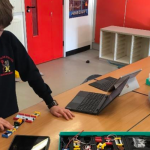The back-to-school season is upon us, and for teachers, it’s an exciting yet preparatory time. Crafting a well-structured lesson plan is crucial to delivering your lessons effectively and providing students with a meaningful learning experience. Here are ten key tips to keep in mind when creating your lesson plan:
1. Define Learning Objectives
Every lesson plan should begin with clear learning objectives. These objectives outline what you want your students to learn by the end of the lesson, serving as the guiding purpose and focus of your teaching.
2. Consider Student Needs
Each class has its unique needs. Customize your lesson plan by taking into account your students’ learning styles and paces. Recognize that every student is different, and your lesson plan should reflect this diversity.

3. Promote Active Learning
Encourage active participation by incorporating interactive learning activities into your lesson plan. Methods such as group work, discussions, projects, and games engage students actively in the learning process.
4. Manage Time Effectively
Organize your lesson plan to make efficient use of time. Allocate specific time slots for each section of the lesson and estimate the time for each activity or topic. Keep track of time at the beginning and end of the class.
5. Include Assessment Tools
Add assessment tools to evaluate student achievement at the end of the lesson. Use tools like quizzes, assignments, project submissions, or self-assessment to monitor student progress.

6. Prepare Teaching Materials and Resources
Prepare all the necessary materials and resources to support your lesson. This includes handouts, presentations, equipment, or any other items required to maintain the flow and structure of the lesson.
7. Remain Flexible
Allow some flexibility in your lesson plan. Be prepared to adjust the lesson’s flow based on student questions or interests. Sometimes the best learning opportunities arise unexpectedly.
8. Evaluate Student Feedback
Seek feedback from students at the end of the lesson and use it to improve your lesson plan. Student input can be invaluable for shaping your future lesson plans.

9. Don’t Neglect Personal Development
Continuously invest in your own professional development. Expanding your knowledge of teaching methods and educational technologies can make you a more effective educator.
10. Establish Effective Communication
Create a strong communication channel with your students and their parents. Regularly share the lesson plan and updates on student progress to ensure that everyone is informed about the class.
Conclusion
An effective lesson plan is the key to enhancing student success. These tips can guide you in creating and implementing lesson plans that not only meet learning objectives but also provide students with a rewarding learning experience. Start each new term prepared with these tips and steer your students towards success.
Let’s explore Twin Teacher Platform for creating effective lesson plan and handling your workload!
Rachel Turner 🖋️
Content Creator and Educator



